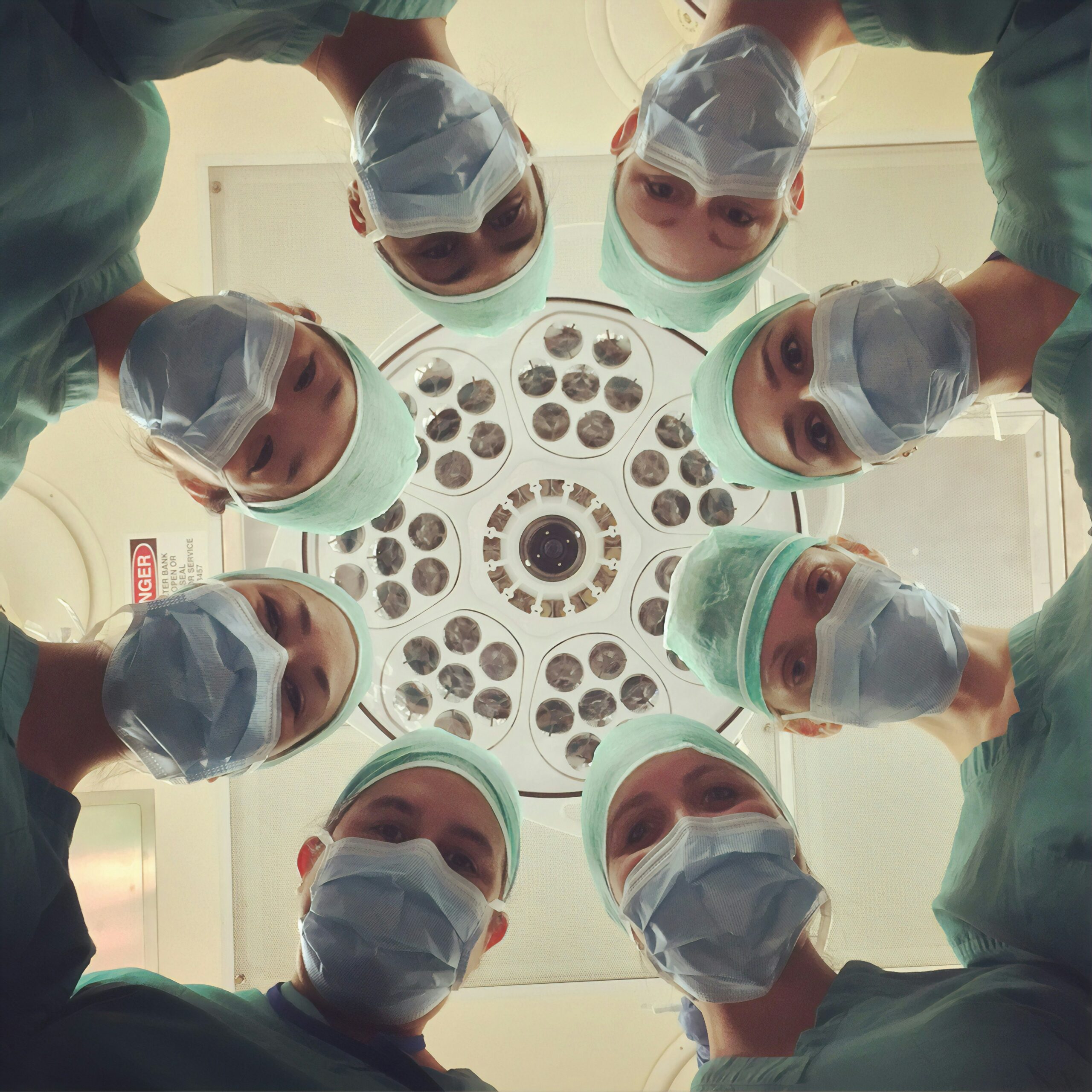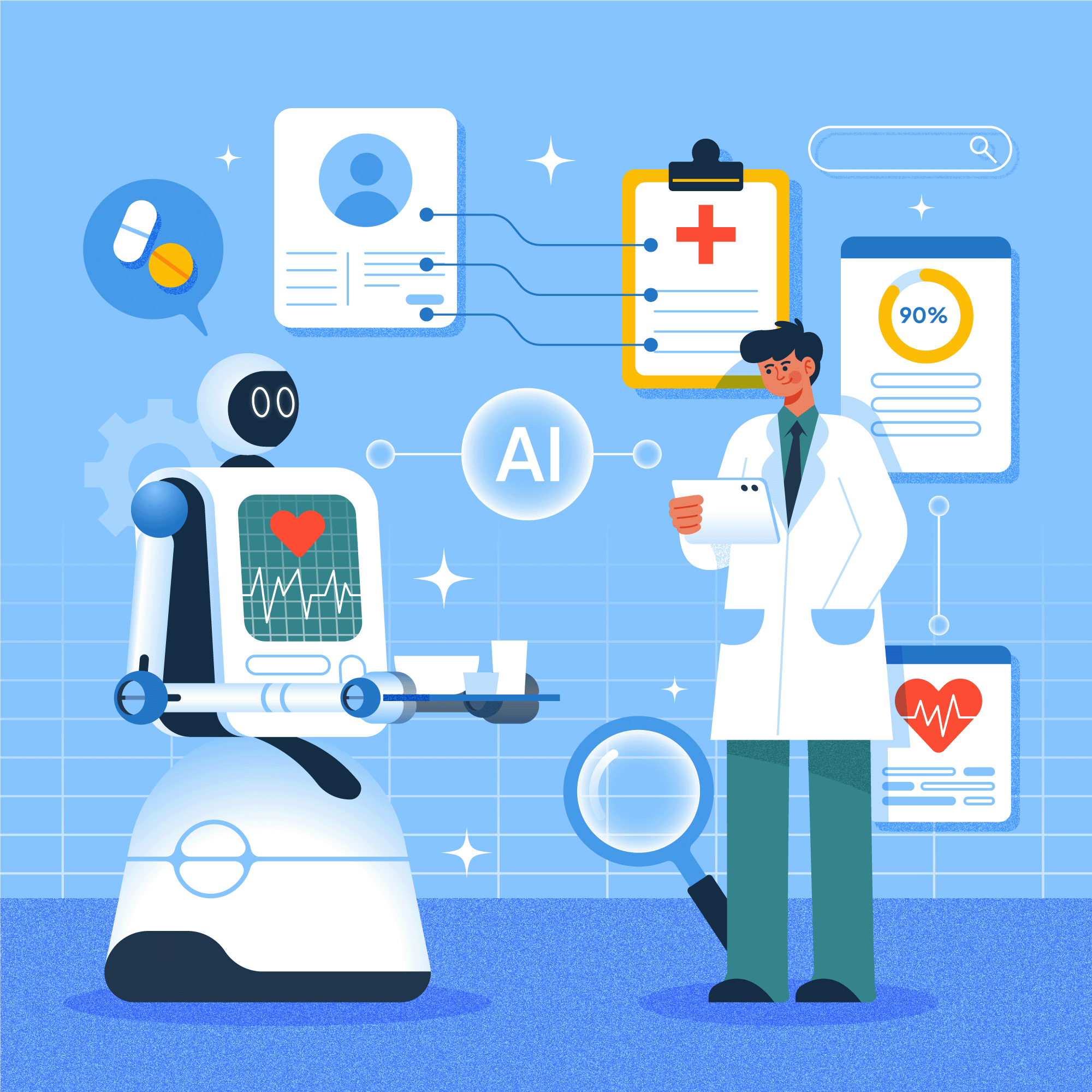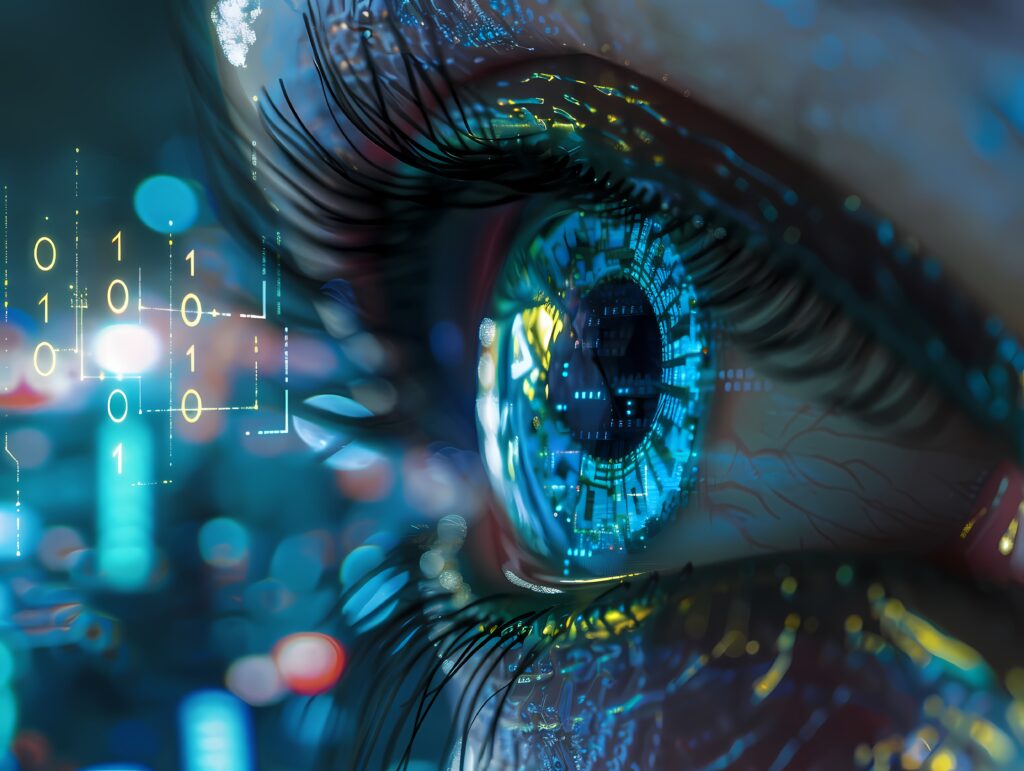Human-Computer Interaction
Eye tracking is a sophisticated technology that detects and analyzes where and how people look at visual objects or scenes. At its core, it entails measuring either the point of gaze (where one is looking) or the motion of an eye in relation to the head. This technology uses modern sensors and algorithms to reliably detect a user’s eye movements, revealing insights regarding visual attention, cognitive processing, and behavioral intentions.

Eye tracking technology, whether used to further scientific research or improve consumer products and services, is at the confluence of human cognition and digital innovation, providing significant insights into our eyes’ silent language. Light from infrared cameras is aimed at the participant’s pupils, creating reflections in both the pupil and cornea. These reflections, also known as pupil center corneal reflections (PCCR), can reveal information regarding the movement and orientation within the eyes.
Academic researchers use eye movement and fixation data to assess attentional processes, compare group behavior, quantify stimulus-induced visual reactions, and so on. Most eye tracking methods published in the literature rely on computer vision techniques. In these technologies, a camera is programmed to concentrate on one or both eyes and capture their movement.

Eye-tracking technology in medical practice
Eye-tracking technology is a valuable tool in medicine, offering applications across various disciplines. Recent research shows its potential for enhancing diagnostic accuracy, improving medical performance, and improving rehabilitation outcomes. It is also used in neurology, cardiology, pathology, surgery, and rehabilitation to provide objective measures for various medical conditions, making it a valuable tool in various medical fields.
Eye tracking technology has shown significant transformative effects in medical practice, and its future development and integration directions are undeniable.
Eye tracking is a crucial technological tool in medicine, providing insights into human behavior, cognition, and visual perception. It accurately measures and analyzes eye movements, allowing researchers to understand intricate patterns of visual attention, gaze fixation, and cognitive processes. Eye tracking is an integral part of medical research, enabling investigations into various aspects of human behavior and cognition. Researchers use eye tracking to understand the dynamics of human perception and information processing, contributing to the advancement of other interdisciplinary fields such as computing, human-computer interaction, psychology, and neuroscience. These contributions enhance medical practice and outcomes.

Eye tracking is a diagnostic tool used by clinicians to evaluate visual function and detect abnormalities in patients with neurological disorders and cognitive impairments. It also aids healthcare professionals in making informed decisions, improving surgical techniques, workflow optimization, and patient safety.

Enhancing diagnostic accuracy
Eye tracking technology has demonstrated potential for enhancing diagnosis accuracy in a variety of medical specialties, including ophthalmology and neurology. In ophthalmology, eye tracking is used to diagnose and monitor disorders such as glaucoma, macular degeneration, and diabetic retinopathy. It can detect longer saccade response times in glaucoma patients and is more effective in diagnosing myasthenia gravis. Clinicians can detect modest problems in visual function by studying eye movements and fixation patterns when doing visual activities. Eye tracking provides objective measures that allow for early diagnosis of illness development, which contributes to increased diagnostic accuracy. In neurology, eye tracking is used to diagnose illnesses such as Parkinson’s and Alzheimer’s disease. Abnormal eye movement patterns, such as low saccadic velocity or poor smooth pursuit, have been identified as potential biomarkers for these conditions. Eye tracking is also used to assess emotion recognition in Parkinson’s disease patients.
Eye tracking technology has been found to be useful in detecting emotional abnormalities in Parkinson’s patients, ADHD, and ASD. Studies have shown that eye movements reveal subtle effects of motion on emotion processing, making it easier to measure these abnormalities. This technology also helps in diagnosing ADHD by integrating it with continuous performance tests, which enhances diagnostic precision. Eye tracking can also help clarify the cognitive profile of ADHD patients by measuring atypical visual attention patterns, such as increased distractibility or difficulty maintaining focus. In the case of ASD, eye tracking technology has proven valuable in diagnosing ASD, particularly among children, by identifying differences in social attention, such as reduced eye contact and atypical gaze patterns. This helps clinicians distinguish ASD from other developmental disorders and aids in an accurate diagnosis.
Improvement of medical performance
Eye tracking technology is a valuable tool in medical training and research, enhancing diagnostics, procedures, and operations. It helps detect emotional abnormalities in Parkinson’s patients, ADHD, and ASD. Eye movements reveal the subtle effects of motion on emotion processing, making it easier to understand. Eye tracking systems also contribute to improved surgical performance by guiding surgeons’ gaze, simplifying complex procedures, and enhancing precision. This technology is essential for developing targeted interventions, optimizing training programs, and improving overall performance in rehabilitation and medical practice.

Surgical instrument tracking and automation are enabled by analyzing a surgeon’s gaze, allowing them to predict target or instrument interaction and automate actions based on their visual focus. This reduces mental effort for surgeons and supports decision-making procedures. Eye tracking helps researchers evaluate the cognitive effort required for surgical tasks, measure mental workload duration and intensity, and improve operational workflows. It also aids in diagnosing ADHD by integrating it with continuous performance tests, enhancing diagnostic precision. It can clarify the cognitive profile of ADHD patients by measuring atypical visual attention patterns. In the case of ASD, eye tracking technology is valuable in diagnosing ASD, particularly among children, by identifying differences in social attention, such as reduced eye contact and atypical gaze patterns, aiding in accurate diagnosis.
Eye tracking technology is a valuable tool for improving medical performance in fields like pathology and cardiology, where medical image interpretation is crucial. By capturing and analyzing eye movements during diagnostic tasks, eye tracking can increase diagnosis accuracy, improve training techniques, and reveal specialists’ expertise. Studies show that analyzing eye movement patterns while reading an ECG can indicate practitioners’ attention and the connection between visual attention and diagnostic performance. This method can help medical students and experienced cardiologists acquire visual expertise by changing their attention and gaze trends. Integrating eye tracking into cardiology practices can identify potential diagnostic inaccuracies or biases, leading to improved diagnostic accuracy. This information can be used to design training programs and decision-making systems to reduce errors and improve precision.
Eye tracking can be used to study and quantify the visual expertise of cardiologists, as research has shown that expert cardiologists have unique eye movement patterns, such as shorter fixation times, more focused scan routes, and more frequent saccades, which indicate more efficient information processing and higher visual expertise. This knowledge can guide the design and adaptation of medical training programs, facilitating the acquisition of the visual skills necessary for accurate and efficient diagnoses.
By adding eye tracking feedback to training programs, beginner practitioners may swiftly graduate to expert-level proficiency using effective visual learning techniques. Analyzing the gaze patterns and fixations of experts can lead to improved diagnostic accuracy. Additionally, incorporating eye tracking into virtual training settings allows students to practice diagnosing digital ECGs and other medical images using experienced eye movement patterns. This learning process contributes to increased accuracy of ECG interpretation among medical students, identifying common diagnostic pitfalls, reducing errors, and increasing consistency in diagnoses. Thus, eye tracking insights can guide the design and adaptation of medical training programs and facilitate the acquisition of visual skills necessary for accurate and efficient diagnoses.

Improving rehabilitation outcomes
Eye-tracking technology can significantly improve rehabilitation outcomes in various medical fields, including cognitive and visual rehabilitation. By providing objective measurements of gaze behavior, eye tracking helps identify deficits, guide interventions, and optimize rehabilitation strategies. For instance, a patient with a closed head injury used eye tracking-supported technology to develop communication skills. This technology can provide insights into the patient’s attentional processes, cognitive load, and information processing.
Eye tracking technology has potential for improving diagnostic accuracy, medical performance assessment, and rehabilitation outcomes. However, it has limitations such as calibration errors, head movements, and participant cooperation. The use of eye tracking in medical settings may be limited by hardware and software availability, and interpretation requires expertise and standardized protocols. Ethical considerations include ensuring participant privacy, obtaining informed consent, and protecting data confidentiality. Additionally, potential bias in interpretation should be considered, and medical interpretations should be combined with other clinical and diagnostic information. Accessibility and affordability can also pose barriers to its widespread use in medical settings.


What’s the problem?
Eye tracking technology is a powerful tool in medicine, providing insights into human behavior, cognition, and visual perception. It aids in decision-making, diagnosis, and patient care in various fields.

A Cost-Effective Eye-Tracker for Early Detection of Mild Cognitive Impairment
Francesco Masulli, Stefano Rovetta, Alberto Cabri, Danilo Greco, Davide Daffonchio.
